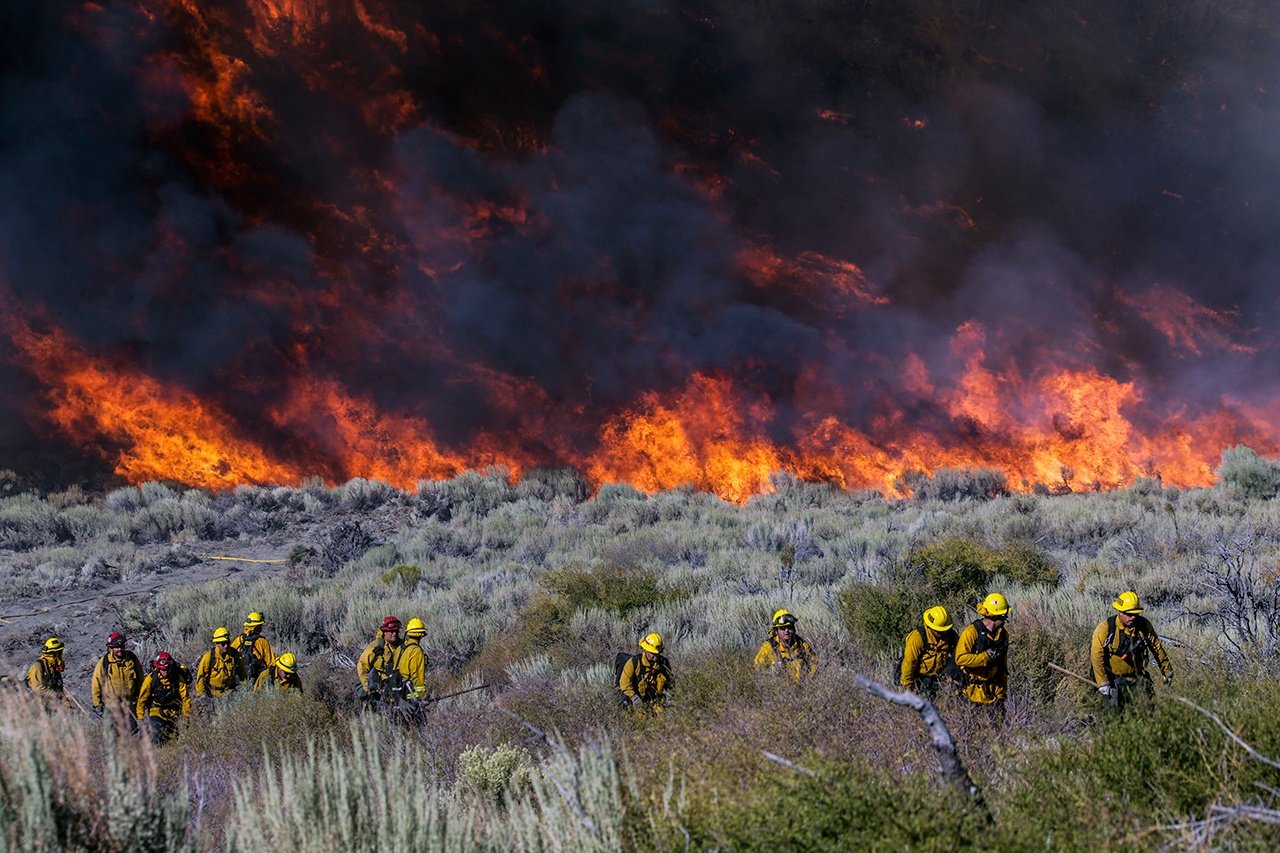By Bradley J. Fikes
The San Diego Union-Tribune
People have started 84 percent of U.S. wildfires and 97 percent of wildfires in coastal California and the Central Valley, according to a new study led by scientists at the University of Colorado, Boulder.
Human-started fires nationwide accounted for 44 percent of the total area of 89,339,131 acres burned over the last two decades.
These fires have vastly expanded the area burnt and the extent of the fire season, the researchers say. Intentionally set managed burns and agricultural fires were excluded from the study.
In California’s Mediterranean climate region, 89 percent of the total 5,921,861 acres burned was caused by human-started wildfires. The region extends along the California coast from the Mexican border north to San Francisco, and inland to the Central Valley.
“Human-started wildfires accounted for 84 percent of all wildfires, tripled the length of the fire season, dominated an area seven times greater than that affected by lightning fires, and were responsible for nearly half of all area burned,” stated the study. (Area measurements, given in hectares by the study, were converted to acres for this article).
One of the biggest wildfires in recent Southern California history, the 2003 Cedar Fire in San Diego County, was started by a lost hunter, who said it was meant as a signal but got out of control.
Other large fires in California have been sparked by causes including arcing power lines, arson, lit cigarettes, fireworks or children playing with fire.
Results were published in the Proceedings of the National Academy of Sciences. Jennifer K. Balch led the study, with Adam L. Mahood as senior author. It can be found at j.mp/humanfires.
Using federal and state records from 1992 to 2012, the team found that people added more than 40,000 wildfires a year across the United States.
July 4 was the most common day for human-started fires, with a total of 7,762 starting that day over the study’s 21-year period. The most common day for lightning-started fires was July 22nd.
Wildfires play an important natural role in the ecosystem, said Balch, director of CU Boulder’s Earth Lab. Moreover, and suppressing them has unintended bad effects, such as making the fires that eventually occur even more devastating.
“There are good fires and there’s bad fires,” Balch said. “This study looks at the wildfires that required some sort of suppression or emergency response. But there’s a lot of room for us to start the right kinds of fires; the prescribed fires, the controlled burns that many ecosystems, particularly in the Western states, need in order to be healthy ecosystems.”
Getting public support for increasing controlled burns is “a tricky problem,” Balch said.
“People don’t like smoke, and we don’t like the risk of a fire burning in our neighborhood,” she said. “But we’re already living with that risk, because we’re putting houses and people in flammable landscapes.
“We tried the failed experiment for over 100 years of suppressing fire and trying to get fire out,” Balch said. “And we didn’t win that war.”
Humans have caused increasing numbers of large wildfires occurring in the spring, the study said. In the summer, increasing numbers of wildfires were largely driven by lightning.
A warmer climate in recent decades has helped extend the potential range of the fire season in the Western states, Balch said. But humans literally set the spark.
“People are providing the ignition during this longer fire season, and also contributing to large fires,” Balch said. “It’s not either people or climate, it’s both.”
It’s unclear what the future holds with regard to climate.
Scientific studies have found that global warming appears to have gone into hiatus. The matter is in dispute. Some scientists say there is no hiatus, while others say the hiatus exists, but is a natural pause.
And this year, a former federal climate scientist alleged that some of his peers manipulated the scientific process to exaggerate warming. They have denied the claim.
Projections indicate that global warming will resume. By the end of the century, the number of lightning strikes is expected to increase by 50 percent due to global warming, the study stated.
But even if that happens, “humans would still remain the dominant ignition source across the majority of the United States land area,” the study stated.


